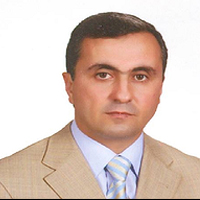Tumours of the Uterine Corpus: A Histopathological and Prognostic Evaluation Preliminary of 429 Patients
Published on: 30th January, 2017
OCLC Number/Unique Identifier: 7286353787
A histopathological review preliminary of 429 patients diagnosed with tumours of the uterine corpus (TUC) cancer between 1984- 2010 in the Vigo University Hospital Complex (Spain) were evaluated prospectively for over 5 years. Of these 403 (93.9%) were epithelial tumours: 355 (82.7%) were adenocarcinomas of the endometrioid type, 5 (1.1%) mucinous adenocarcinoma, 10 (2.3%) serous adenocarcinoma, 17 (3.9%) clear cell carcinomas, 11 (2.5%) mixed adenocarcinoma, 4 (0.9%) undifferentiated carcinomas and 1 (0.2%) squamous cell carcinomas. A total 20 (4, 6%) were mesenchymal tumours: 4 (0.9%) endometrial stromal sarcoma, 7 (1.6%) Leiomyosarcoma, 9 (2%) Mixed endometrial stromal and smooth muscle tumour. A total 1 (0.2%) were mixed epithelial and mesenchymal tumours: (0.2%) Adenosarcoma 1. And 5 (1.1%) were Metastases from extragenital primary tumour (3 carcinomas of the breast, 1 stomach and 1 colon). The mean age at diagnosis from total series were 65, 4 years (range 28-101 years). Age was clearly related to histologic type: Endometrial stromal sarcoma 46.0 years, Leiomyosarcomas 57.1 years, Adenocarcinomas of the endometrioid type 65.4 years, Clear cell carcinomas 70.1 years and mixed endometrial stromal and smooth muscle tumours 71.2 years. Five-year disease-free survival rates for the entire group were: Endometrial stromal sarcoma 50%, Leiomyosarcomas 28.6%, Adenocarcinomas of the endometrioid type 83.7%, Clear cell carcinomas 64.7% and mixed endometrial stromal and smooth muscle tumours 44.4%. The 5-year disease-free survival rates of patients with Adenocarcinomas of the endometrioid type tumors were 91.4% for grade 1 tumors, 77.5% for grade 2, and 72.7% for grade 3.
In conclusion, we describe 5-year histological and disease-free survival data from a series of 429 patients with TUC, observing similar percentages to those described in the medical literature. The only difference we find with other published series is a slightly lower percentage of serous carcinomas (ESC) that the Western countries but similar to the 3% of all ESC in Japan. Our investigation is focus at the moment on construct genealogical trees for the possible identification of hereditary syndromes and to carry out germline mutation analysis.
Patient, disease and surgeon predictors of successful bilateral sentinel lymph node mapping for endometrial cancer: A retrospective, multicenter analysis
Published on: 14th July, 2022
Objective: Sentinel lymph node mapping is an acceptable standard for lymph node evaluation in patients with endometrial cancer. The purpose of this study was to evaluate the adoption of this technique at two academic institutions, including which patient and disease features are associated with rates of successfully identifying sentinel lymph nodes with fluorescent mapping. In addition, we sought to characterize if and how surgeons experience the technique related to successful bilateral sentinel lymph node mapping. Methods: A retrospective chart review was performed of patients at two academic institutions who underwent sentinel lymph node mapping prior to a minimally invasive hysterectomy for endometrial cancer over the first 30 months during which the technique was adopted at each institution. A modified Poisson regression model was used to determine the relationships between patient, disease, and surgeon factors on outcomes of sentinel lymph node mapping. Results: A total of 460 charts were reviewed. The mean age was 64 and the median body mass index was 34.2. The most disease was stage I (83%), endometrioid (89%), and Grade I (64%). The bilateral sentinel lymph node mapping success rate was 65%, while unilateral or bilateral success occurred in 91% of cases. Sentinel lymph node mapping was significantly more likely to be successful in premenopausal women (RR 1.25; 95% CI 1.07 - 1.46; p = 0.005) and Asian women (RR 1.48; 95% CI 1.3-1.68; p < 0.001). BMI was not significantly predictive of mapping success (RR 1.03; 95% CI 1.00 - 1.07; p = 0.05). Increasing surgeon experience with the technique did predict successful bilateral sentinel lymph node mapping (RR 1.02; 95% CI 1.00 - 1.03; p = 0.02).Conclusion: Premenopausal status and surgeon experience with the technique increases the likelihood of bilateral sentinel lymph node detection for endometrial cancer.
Single brain metastasis as onset of stage I endometrial carcinoma in patient affected by multiple sclerosis: the first case in literature
Published on: 25th April, 2023
Brain metastases in any gynecological cancer are a rare occurrence. Even more so, it is extremely rare for a gynecological malignancy to manifest itself with symptoms indicative of cerebral involvement. Literature regarding the association between MS and cancer is conflicting. We herein report a rare presentation of single metastasis of endometrial carcinoma in a 59-year-old woman affected by Primary Progressive Multiple Sclerosis (PPMS). A head CT scan was performed, which revealed the presence of an expansive lesion in the left parietal region. After careful assessment, a high-grade endometrial carcinoma was diagnosed and a decision was made to remove both the primary lesion and the brain metastasis in one sitting, through a conjoined surgery session involving neurosurgeons and gynecologists. The postoperative course was free from complications up until a few days after being transferred to a rehabilitation center, where she died following respiratory complications.
Age as a Predictor of Time to Response for Patients Undergoing Medical Management of Endometrial Cancer
Published on: 4th October, 2023
Objective: To explore the pathologic response rate to primary progesterone treatment in patients with Endometrial Intraepithelial Neoplasia (EIN) and early-stage endometrioid-type Endometrial Adenocarcinoma (EAC).Methods: Retrospective chart data were collected for patients with either EIN or EAC receiving primary progesterone treatment between 2015 and 2022. The presence of complete or partial response, time to response, and other demographic and treatment factors were recorded to determine independent predictors of response to progestin treatment.Results: In total, 112 women who were diagnosed with EIN or EAC were treated with upfront progestin therapy, of whom 79 had sufficient follow-up to assess response. Fifty patients (63%) responded, of whom 10 (20%) ultimately relapsed. Response was more robust among patients with EIN (79%, n = 33) compared with patients who had cancer (46%, n = 17). The median time to respond was 5.8 months overall. Diagnosis of EIN, younger age at diagnosis, and any pathologic evidence of progesterone effect were all predictors of treatment response. Younger patients had a significantly shorter time to partial or complete response with a median time to response of 5.9 months in patients ≤ 45 and 13.8 months in patients > 45. Conclusion: Our study demonstrated a lower overall response rate (63%) than reported in previous studies, especially for patients with cancer (46%). Younger patients had a significantly shorter time to respond than older patients. Pathologic progesterone effect observed at any time during treatment was a significant predictor of treatment response regardless of diagnosis and could serve as an early predictor of response to therapy.
Pattern of LRR in Endometrial Cancer and Identification of Predictive Factors
Published on: 8th July, 2024
Background: Tailored adjuvant treatment is key to managing endometrial cancer effectively. Understanding prognostic factors of loco-regional failure and the impact of adjuvant treatment can help in treatment de-escalation without compromising survival outcomes.The aim of this study was to assess the pattern of failure in endometrial cancer patients and to determine predicting Loco-Regional Recurrence (LRR) factors.Patients and methods: Data were collected from 214 patients treated for endometrial cancer between 2005 and 2012 in Salah Azaiez Institute in Tunisia. All patients underwent upfront surgery followed by adjuvant brachytherapy with or without external beam radiation. The median follow-up period was 44 months. Univariate and multivariate analyses were performed to identify prognostic factors for LRR.Results: The 5-year overall survival rate was 78.1%, and the 5-year progression-free survival rate was 80.1%. LRR occurred in 25 patients (11.6%), with a median recurrence time of 29 months (range 4 months - 46 months). Pelvic relapse was the most common site, occurring in 10 patients. Vaginal relapses were observed in 9 patients, and retro-peritoneal relapses were observed in 6 cases. FIGO stage, tumor grade, histologic type, Lympho-Vascular Space Invasion (LVSI), and delays in adjuvant treatment were significant predictors of LRR.Conclusion: Identifying prognostic factors for LRR in endometrial cancer is crucial for optimizing adjuvant treatment strategies. Higher FIGO stages and the presence of LVSI were independent predictive factors for LRR. Tailored adjuvant treatment, taking these prognostic factors into account, is essential to improve patient outcomes and minimize unnecessary treatment-related toxicity.
Types and Outcomes of Diagnostic Measures provided for women Presented with Postmenopausal Bleeding
Published on: 21st April, 2025
Background: Postmenopausal bleeding (PMB) is bleeding from the genital tract after 12 months of amenorrhea in a woman over the age of 50, or 24 months if below the age of 50 years, in 10% of women presented with PMB, the cause is endometrial cancer.Purpose: To assess the clinical presentation types and outcomes of diagnostic measures provided for women presenting with PMB at Saad Abu-Alela Hospital, Khartoum, Sudan.Methodology: It was a descriptive, cross-sectional study conducted at Saad Abu-Alela Teaching Hospital in the period from January to December 2022.An interview questionnaire was used for data collection. Fifty-nine (59) postmenopausal women were included in this study, age, parity, risk factors, duration of bleeding, duration of menopause, ultrasound findings, and hysteroscopy findings were recorded.Results: The majority of study participants were aged between 50-54 years, menopause duration was most 1-4 years, most of the participants were educated and medically free, DM and HTN, and most of the participants were multiparous. Duration of PMB ranged between weeks in a third of cases and up to more than a year in some cases, amount of bleeding was mild in more than half. Ultrasound is used to assess the endometrial thickness and other findings, also hysteroscopy and biopsy or Dilation and curettage and hysterectomy.Conclusion: The ultrasound and endometrial biopsy via inpatient hysteroscopy and dilatation and curettage were the best tools for evaluation of (PMB), benign conditions were the most frequent outcome and endometrial cancer.




